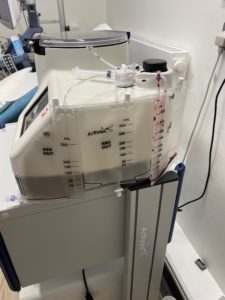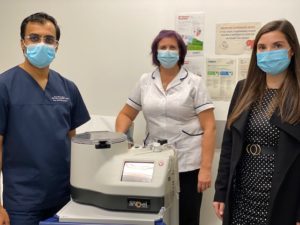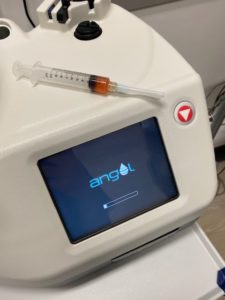One of the impacts of the pandemic is that many routine surgical procedures have had to be postponed. If you are waiting for knee replacement surgery, surgical repair for tendinopathy or other types of surgery for musculoskeletal problems, you may have found yourself with a far longer wait than normal.
It can be frustrating to have to wait for surgery when you have a degenerative condition like osteoarthritis or you are experiencing worsening pain from a soft tissue injury. Even if you are not due to have surgery, finding a way to manage debilitating symptoms is important for maintaining your quality of life and protecting your physical and mental health.
At W27, we have seen growing numbers of people requesting PRP (platelet rich plasma) injections in recent months. In particular, vulnerable older people are coming forward and requesting PRP to help them manage the pain of conditions like knee osteoarthritis and tendinopathy. These are some of their most frequently asked questions and our responses…
What are PRP injections?
A PRP (platelet-rich plasma) injection is a therapeutic procedure that harnesses the natural healing properties of blood to help repair damaged cartilage, muscle, ligaments, tendon and even bone. PRP therapy has been around since the 1980s however it has recently begun to be used to treat conditions like osteoarthritis, soft tissue injuries and tendinopathy.
How does it work?
Plasma is the liquid component of blood. It contains proteins, antibodies, nutrients and glucose.
Platelets also occur naturally in blood.
They secrete substances called growth factors and other proteins that help to promote healing, stimulate tissue regeneration and regulate cell division.
Experts are unsure exactly how PRP injections work, however evidence suggests they may help to:
- Stimulate new cartilage to form.
- Slow the progress of osteoarthritis and combat inflammation.
- Increase natural lubricating fluid within the joint.
- Alter pain receptors to reduce the experience of pain.
What happens in a treatment?
 Platelet rich plasma injections use platelets and plasma taken from a sample of the patient’s own blood.
Platelet rich plasma injections use platelets and plasma taken from a sample of the patient’s own blood.
The blood sample is placed inside a centrifuge and spun at high speeds to separate out the platelets and plasma.
Red blood cells (around 45% of the blood sample) are forced to the bottom of the vial while a thin layer of platelets and white blood cells collect in the middle and plasma forms at the top.
The PRP solution is prepared for injection and re-injected into the patient, using ultrasound to ensure accuracy of the injection. While normal blood has around 150,000 to 450,000 platelets per microliter, platelet-rich plasma has between 2.5 and 9 times that amount.
Is it effective?
 PRP injections have been used to promote healing and cell generation since the mid-1980s. There is a growing body of evidence to suggest it is an effective treatment for tendinosis and tendinopathy. More recently it has also been used for osteoarthritis. Some of the results are inconclusive but others suggest it could be an effective way to manage the pain of this degenerative condition.
PRP injections have been used to promote healing and cell generation since the mid-1980s. There is a growing body of evidence to suggest it is an effective treatment for tendinosis and tendinopathy. More recently it has also been used for osteoarthritis. Some of the results are inconclusive but others suggest it could be an effective way to manage the pain of this degenerative condition.
One study published in 2013 in the journal Sports Medicine, for example, involved patients with osteoarthritis in both knees. Each knee was given either one or two PRP injections or a placebo saline injection. The results showed patients whose knees were treated with one or two PRP injections saw a reduction in pain and stiffness and improvements in knee function at six weeks and three months. The positive results dropped off a little at six months although were still better than before the PRP treatment. The group that received placebo injections saw a small increase in pain and stiffness and a decrease in knee function.
Is it safe for vulnerable older people?
The treatment carries few risks because platelet-rich plasma is autologous, which means it comes from the patient’s own body and is a naturally-occurring fluid. Other painkilling injections, such as corticosteroids, are effective but can weaken ligaments and tendons over time.
Will I have to be admitted to hospital?
No, PRP injections are performed as an outpatient procedure within the radiology clinic using Covid-safe procedures. The whole treatment is quick – just 25 minutes from start to finish. This means that vulnerable patients are within a healthcare environment for the shortest possible time.
Contact us for more information about PRP injections as a treatment for vulnerable patients as well as other adults.
THERAPEUTIC INJECTIONS | MANCHESTER, WIGAN, CHESHIRE + MORE
W27 provides fast, accurate diagnosis and treatment of musculoskeletal symptoms and conditions using the latest state-of-the-art imaging facilities. We also offer therapeutic injections to help relieve joint pain.
For your appointment there is a choice of locations:
The OrthTeam Centre Ohm Building – 168 Barlow Moor Road, Manchester, M20 2AF
The John Charnley Wing, Wrightington Hospital – Hall Lane, Appley Bridge, Wigan, WN6 9EP
Euxton Hall Hospital – Wigan Road, Euxton, Chorley, PR7 6DY
The Spire Manchester – 170 Barlow Moor Road, Didsbury, Manchester, M20 2AF
HCA The Wilmslow Hospital – 52 Alderley Road, Wilmslow, Cheshire, SK9 1NY
MedSerena Upright MRI Centre – 26-28 The Boulevard, Manchester, M20 2EU
Information about our Fees can be found here.
If you have any questions or would like to discuss your options with a specialist, please contact the team to book an initial consultation.










